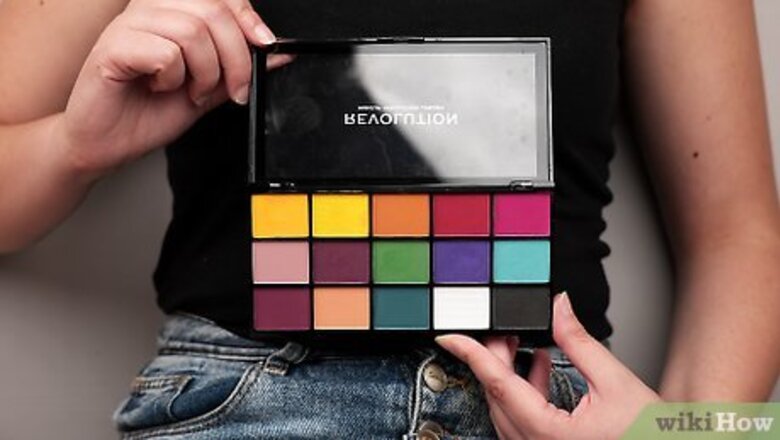
views
Using Regular Makeup
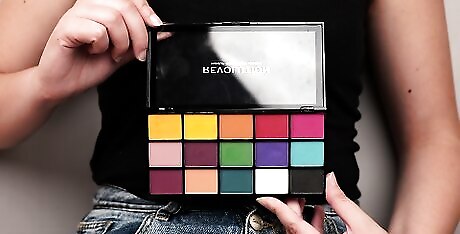
Find a few dark shades of eyeshadow. A dark color of eyeshadow on your skin can look like a very realistic bruise, as if you were just given a nasty bump. See if you can swipe a parent's makeup pallet, or ask permission. If you want it to look really real, try a combination of dark blue, dark purple, brown or yellow, dark red and even black to make it look just right. The makeup should be matte, not sparkly. If your bruise sparkles, it won't look real.
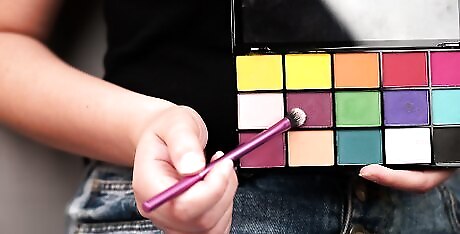
Apply a little makeup to the end of the applicator brush. Wet the brush very lightly, and color the brush with a thin layer of eyeshadow.
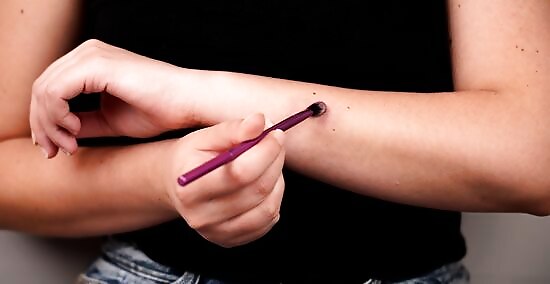
Apply the makeup to your skin smoothly. It's important to go slow and light on the makeup at first. You can always add more. Work the makeup into your skin in a circle, blending it as you go. Smaller fake bruises usually look better. Go for a bruise about the size of two coins. Use the brush on the edges of the bruise to smear out the makeup a little and make the bruise look realistic. Don't go too heavy, or it'll look fake.
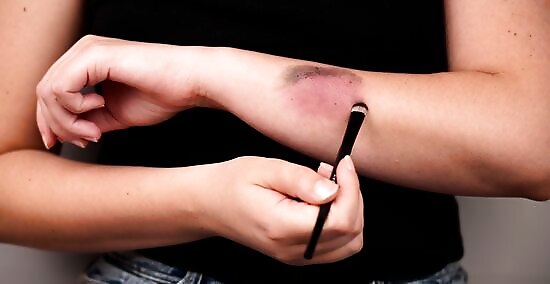
Add details. Depending on what kind of story you want to use to explain your fake bruise, you might want to add some extra details to the bruise to get it to look real. You can add little cuts, scrapes or extra coloration to the bruise. Try rubbing some red blush around the edges for a raw, reddish look after you've achieved the level of darkness you want. This will look like you grazed yourself against something rough. Add a little yellow around the outside if you want it to look like an old bruise. Cuts are usually harder to pull off. Use a fine-tip red pen if you want to try.
Using Costume Makeup
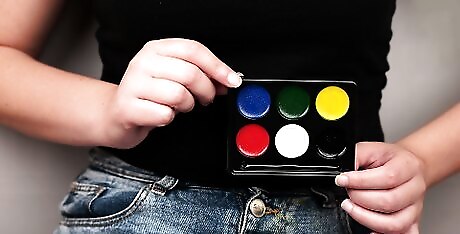
Get a palette of grease paint or sweat-resistant costume paint. If you want to make a really real looking bruise, costume paint is the way to go. When you buy a simple palette of colors, you'll have lots of options for making bruises that look so real everyone will believe you.

Use a makeup sponge. Most costume makeup palettes will come with makeup sponges, instead of applicators or other brushes. These are the best ways for applying makeup to look like a bruise. If you don't have one, you can use part of a large, soft, yellow sponge that you might use for washing the car or some other purpose. Ask your parents if one is available.
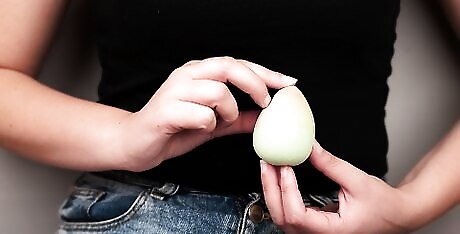
Get out something to blot with. When you have your palette, put it on some newspaper and have some paper towels or other rags that you can use to blot the makeup with while you're working. It's important to be really light with costume makeup so that your bruise doesn't look fake.

Dab some bright red on the end of the sponge. Take one corner of the sponge and dab it in a lighter matte color of red. New bruises have the most blood in them, so this color is appropriate for a recent bruise, or a very severe one. These makeups are ready to go out of the package, or might require a little amount of water to soften them up. Always follow the instructions that come with them.

Blot excess paint off. After getting some paint on your sponge, dab it once or twice on the paper towel, or on the rag that you've got with you. You don't want to apply too much, because it'll be difficult to get off if you do. Some pros use a plastic mixing palette to help do this. If you have access to one, that'd be great to help you dab and mix colors.
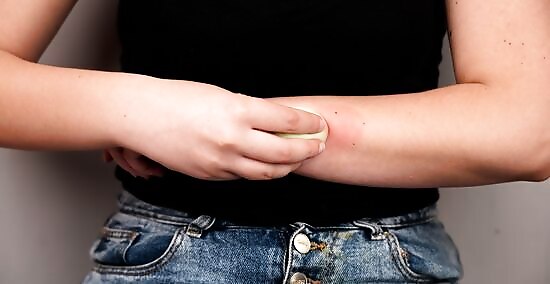
Dab the paint lightly onto your skin. Use the sponge and blot very gently at the spot you want to look like a bruise, going in a circle. You'll only need to blot 2-4 times to get enough paint onto the area to look effective. Be careful not to overdo it. The sponge helps to make the paint look uneven and spotty, like it came from under your skin.
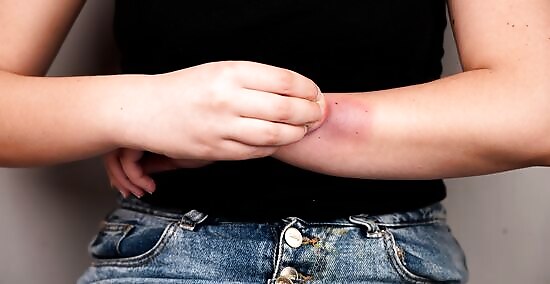
Layer some blue over it. With another corner of the sponge, use a little light blue color and blot a very tiny amount over the top of the redness. Take some paint on the sponge, blot it on the paper, and apply it to your skin as before, but a little more lightly. While this might seem strange, the little capillaries in your skin will sometimes show up blue in some bruises, which is why they turn dark eventually. A little blue helps it look real.
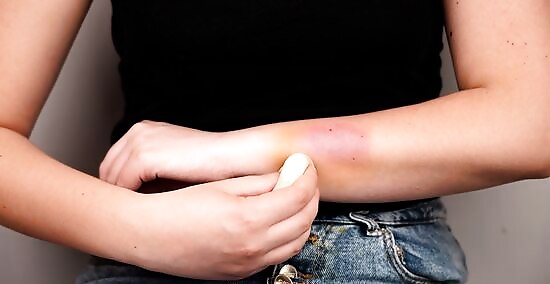
Add other colors for detail. If you want the bruise to look a little older, you can apply a small amount of greenish color, or yellow, around the outer edge of the bruise as you did the other colors. Be extremely light. Sometimes, a little red and blue is enough to make the bruise look fine. Don't overdo it with the makeup.
Using Pencils
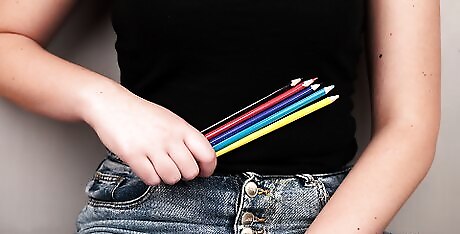
Pick a variety of colors. It will look a lot like an older, more healed bruise if you use a regular pencil, but you can use a variety of colors if you want to make it more exciting. Use regular gray pencil lead, as well as dark blue and purple for your bruise.
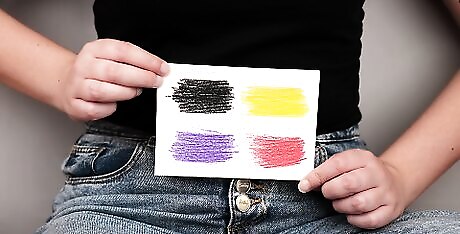
Draw a circle on a piece of paper and start filling it in. Using the flat side of the pencil lead, rub it on the paper rapidly, coloring it in quite darkly to create a small pile of colored dust that you can put on your skin. Even if you think you've got enough, keep going until you've got a good pile. Repeat this process with each pencil, creating a separate pile for each. If you try to make one circle, it'll all blend into a kind of brown color which won't look real. Instead of using regular paper, get a piece of sandpaper to rub the pencil on, so you can get dust without having to waste as much of the pencil.
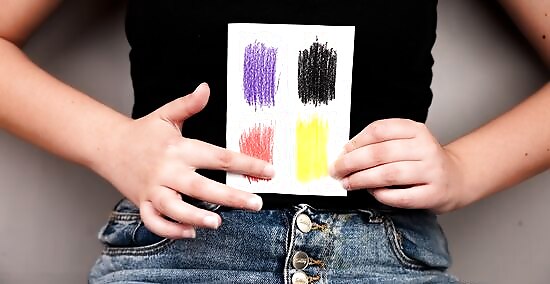
Apply the dust onto your skin. Get a little dust on the end of your finger and rub the dust in a circular pattern onto the spot you want to look bruised. Blend out the edges gently to make it look realistic. If you only use a little, it'll flake off pretty easy. Keep rubbing it in to get it to stick. Make sure you use enough.
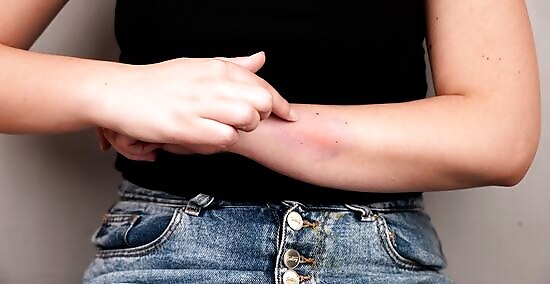
Apply more layers until it looks real. It's usually best to start with the colors and then go over the top with the graphite pencil to make it look as blended and realistic as possible. Start with the red colors, then start adding darker tints, such as purple and blue, to the bruise. Go over the top with the graphite when you're finished, blending out the edges. This always will depend on your skin tone and a variety of factors. Use your judgment and play around until it looks like a real bruise.
Using Markers
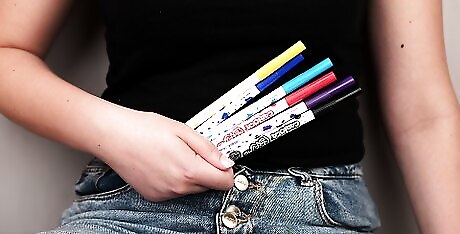
Use basic colored markers. Pick a few non-permanent markers that look like a good bruise color. Dark reds, blues and purples are all good choices. Use a brownish yellow (or yellow and brown) marker for the outside edges, as well. Make sure to not use metallic or glitter markers, which will look obviously fake when you get them onto your skin. Highlighters give a great yellow-bruise look as well. Use a highlighter instead of a yellow marker, if you've got a highlighter on hand.
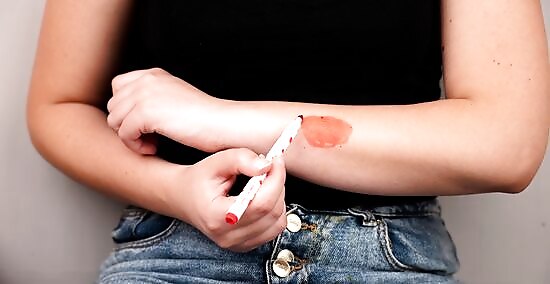
Start in the center with the reddest color. Draw a small circular-shaped shape in red at the center where you want your bruises to be, using a very small amount of marker on your skin. It's easy for this to look like the least authentic of all the fake bruises, so go easy on the marker. Use little dots of color and blend the colors together later. It's not important that it be bruise-shaped right now. Just get the colors on your skin.
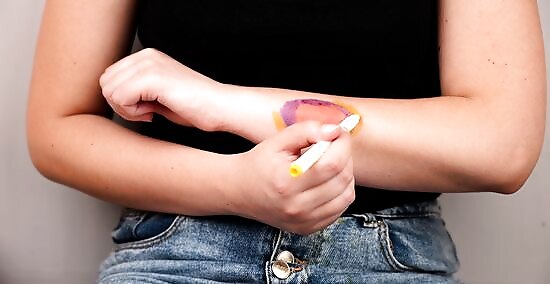
Add layers of other colors. Real bruises aren't just one color, but a variety of weird little marks. Go over the red with darker colors to smooth it out, using little dabs of the other colors you're using over top of the red circular shaped area. Go around the outside of the shape with the yellow when you're finished, blending everything outward.

Blend the colors together. Smear the colors to make it look more bruise-shaped and realistic. Get one of your fingers wet and immediately rinse the area a little, blending the colors in. This helps to make it look a lot more realistic.
Faking It
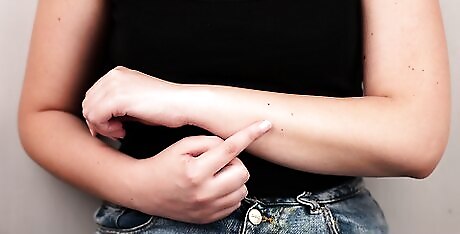
Pick a good spot. If you want your bruise to look real, you've got to pick a good spot for it. Some places don't actually bruise that much, so you've got to pick a good fleshy place on your body, or a place where you might be injured. The best places for fake bruises are usually: Your forearm. Anywhere on your leg. Your forehead. Your chest or shoulder. Don't put a fake bruise near or around your eyes.
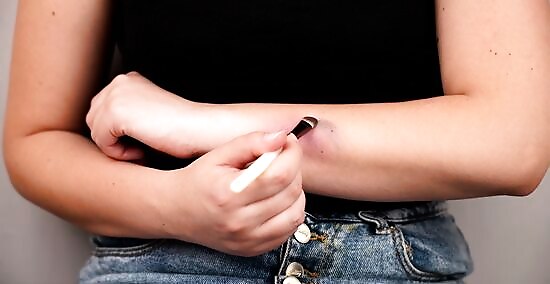
Apply the bruise as realistically as possible. It's fine to experiment and play around, but if you're really going to fake it, you've got to make it look real. Spend some time getting it right and playing around with different color combinations to get the best look possible for your skin tone. Don't make the shape too circular. If it looks like a perfect circle, it'll be obviously fake. Real bruises are jagged and oddly shaped.
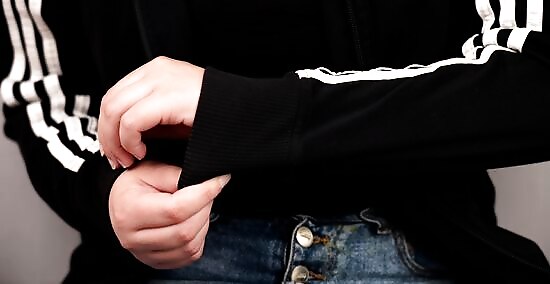
Cover the bruised area. If you want someone to really believe you've got a nasty bruise, you'll need to do a little acting and not spoil it too soon. To play your prank the right way, cover the bruise with your clothing or under a hat until you're ready to reveal it. Pencil graphite bruises are difficult to cover up without them rubbing off. Those types of bruises are typically best for just showing off quickly as a goof. If you want to fake it, try using makeup or another technique.
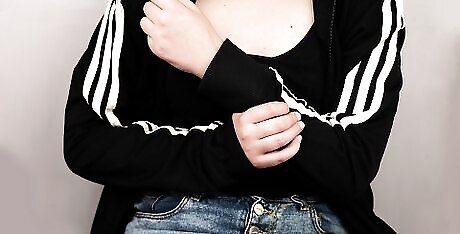
Fake an injury. Real looking bruise in place? Check. Unsuspecting friend in sight? Check. Wait for a good moment, when you're both doing something physical or playing in some way, then fake an injury. Wait until your friend comes close and then grab the area with the fake bruise suddenly and start hollering. Really play it up. Pretend that you're in pain and look angry. It's a good way to build some sympathy or freak out the victim of your prank. If you don't want to go through all the acting trouble, you could always just whip out your bruise and say something like: "You should see the other person." "I got this working on an oil rig." "I fell off my dad's motorcycle."

Reveal your fake bruise. After faking it or coming up with your great excuse, it's time for the big reveal. Pull up your sleeve and groan loudly, saying, "Ahh, look at that! It hurts!" or you could play it tough and say, "Doesn't even hurt." Show it quick and then tuck it back away so your friends don't have time to closely inspect it and see that it's not real. If accused of using sparkly eyeshadow for your bruise, claim that you were embarrassed and tried to cover the bruise up with makeup that had sparkles in it.
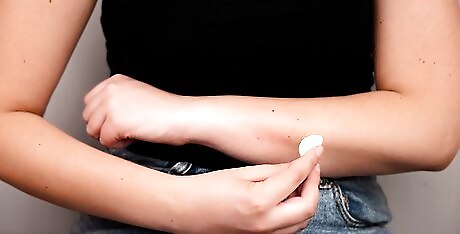
Come clean eventually. After you get your friends going, a good extra part of the joke is to take your finger and make the bruise "disappear." Wipe part of it off, then look at it like you're confused, then say, "Gotcha." It's not usually good to keep up a joke like this for very long, especially if your excuse is about fighting or being hit by someone. Jokes are one thing, but tell the truth eventually. Use warm water and soap to get the eye shadow off when you're done. Water won't do. You may also use eye make up remover.












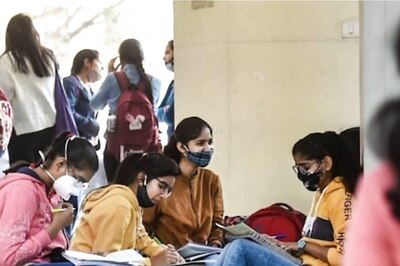






Comments
0 comment